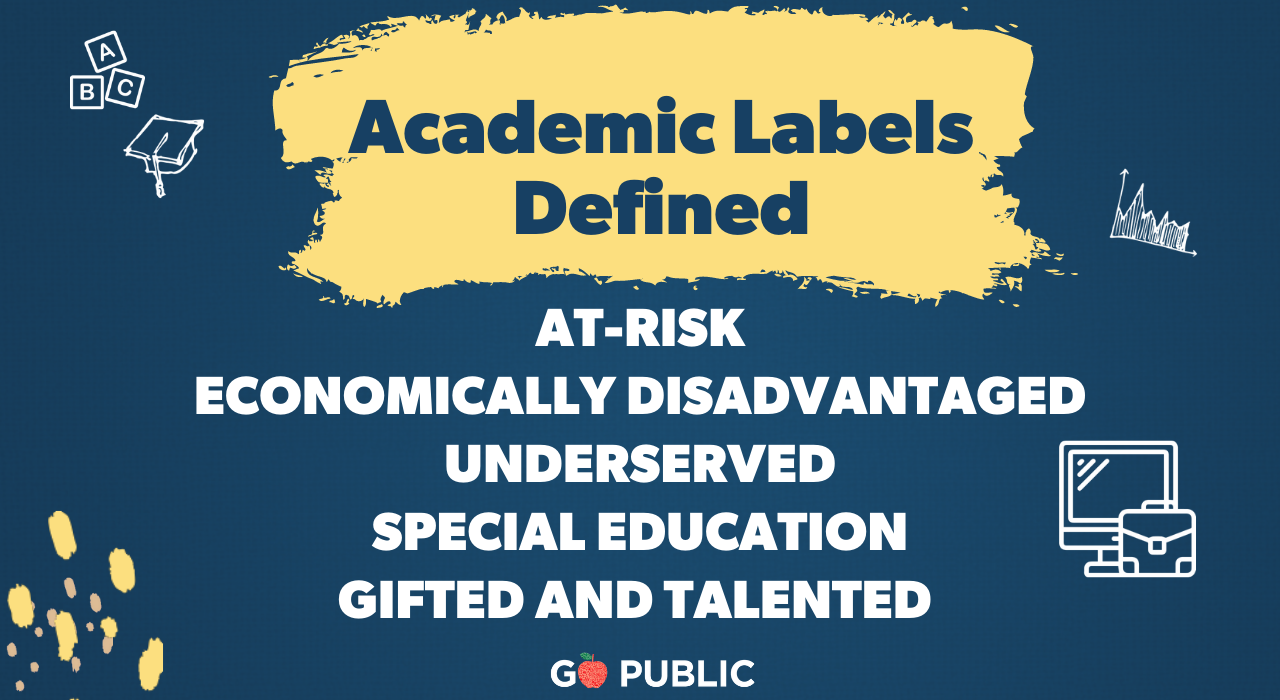Student Academic Labels Defined
Response from “Ask a Former Board Trustee”- Clear Creek ISD Chapter: Joanna Baleson, Ken Baliker, Jennifer Broddle, Bob Davee, Glenn Freedman, Ann Hammond, Charlie Pond, Page Rander Dee Scott, Win Weber © AFTCCISD2021
How do schools decide which ‘label’ applies? The oversimplified answer: Informed observation and testing. Educators are experienced in identifying student attributes that may inhibit or enhance learning. Next, they refer those students to specialists for testing, which ideally leads to changes that increase a student’s chances for school success.
The Need for Labels
On the positive side, labels help us understand and identify student characteristics and needs that help our educators, administrators and lawmakers design, implement and fund more effective curricula and learning environments. However, labeling a child can have a serious downside. Labels can lead to stigmatization, which in turn can affect a child’s sense of self and perhaps being bullied or marginalized.
At-Risk and Economically Disadvantaged are the most common labels
According to the Texas Education Agency, in the 2019-20 school year, there were 5,416,400 students in Texas, with 50.1% of students considered at risk of dropping out of school and 60.2% considered economically disadvantaged. For example, in Clear Creek ISD, there were 42,042 students, of whom 40.1% were considered at-risk of dropping out and 28.3% were considered economically disadvantaged.
What is "At-Risk"?
At-risk is a predictive term. In theory, all students may be considered “at risk” of graduating in one way or another. The State of Texas has, however, by statute and regulation, identified certain specific markers that, when experienced by a student, diminish their likelihood of successfully completing high school and becoming a contributing member of society.
Who is considered "at-risk"?
The Texas Education Code details what factors lead to an ‘at-risk’ designation (http://ritter.tea.state.tx.us/peims/standards/1314/e0919.html ). For instance, ‘at-risk’ students may be pre-K through grade 3 students who have not performed satisfactorily on readiness assessments; intermediate and high school students who are failing two or more foundation courses; students with limited English proficiency; homeless students or those under the care or custody of child protective services; and students who are expelled, pregnant, in legal difficulties or in alternative education programs. Not surprisingly, addressing those issues often requires intervention and individualized teaching and counseling approaches beyond those that are necessary to insure the graduation of the majority of students.
What is "economically disadvantaged"?
“Economically Disadvantaged” is a descriptive term. For the Texas Education Agency and Texas’ public schools, the term means a student who is eligible for free or reduced priced meals under the National School Lunch and Child Nutrition Program. That eligibility is, in turn, tied to household income per child. Therefore, it is a measure of economic resources that are available to any particular child, or a lack thereof, and economically disadvantaged is often associated with other social and family circumstance that might lead to a lack of readiness for school or learning.
What is the meaning of "underserved"?
Underserved is used as a descriptive term for a population, not an individual. It refers to those services which support learning, not as a blanket term for impoverished communities. For example, growing up in an area with few healthcare services might lead to a group being called underserved. A more accurate, but more awkward, term is “under-resourced.”
Special Education
Special education refers to an individualized instructional program that is an intervention carefully designed to overcome or eliminate the obstacles that keep a child with disabilities from learning and succeeding in school.
Gifted and Talented
A gifted and talented student performs at or shows the potential for performing at a remarkably high level of accomplishment when compared to others of the same age, experience or environment and who exhibits high-performance capability in an intellectual, creative or artistic area; possesses an unusual capacity for leadership; or excels in a specific academic field. (Texas Education Code)
Learn More
At-Risk Students: https://tea.texas.gov/texas-schools/support-for-at-risk-schools-and-students
Special Education Students: https://tea.texas.gov/academics/special-student-populations/special-education
Gifted and Talented Students: https://tea.texas.gov/academics/special-student-populations/gifted-and-talented-education























